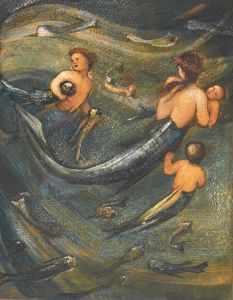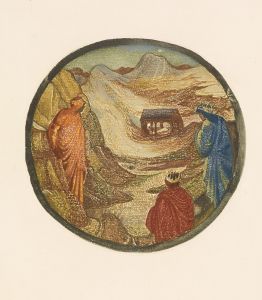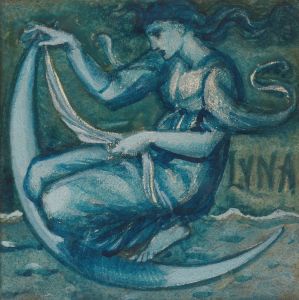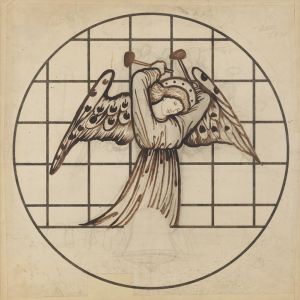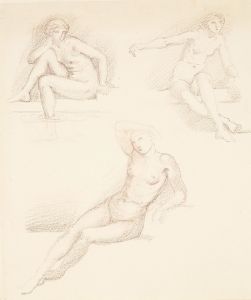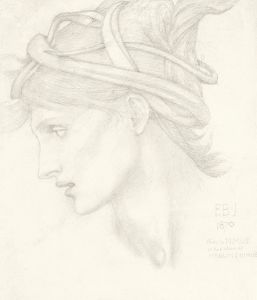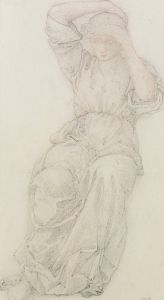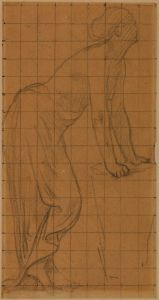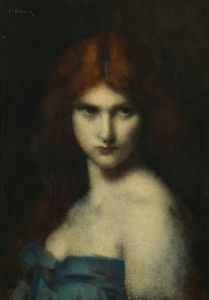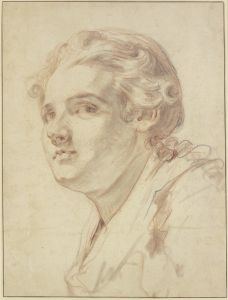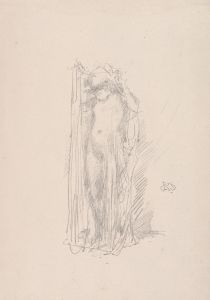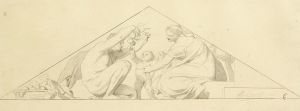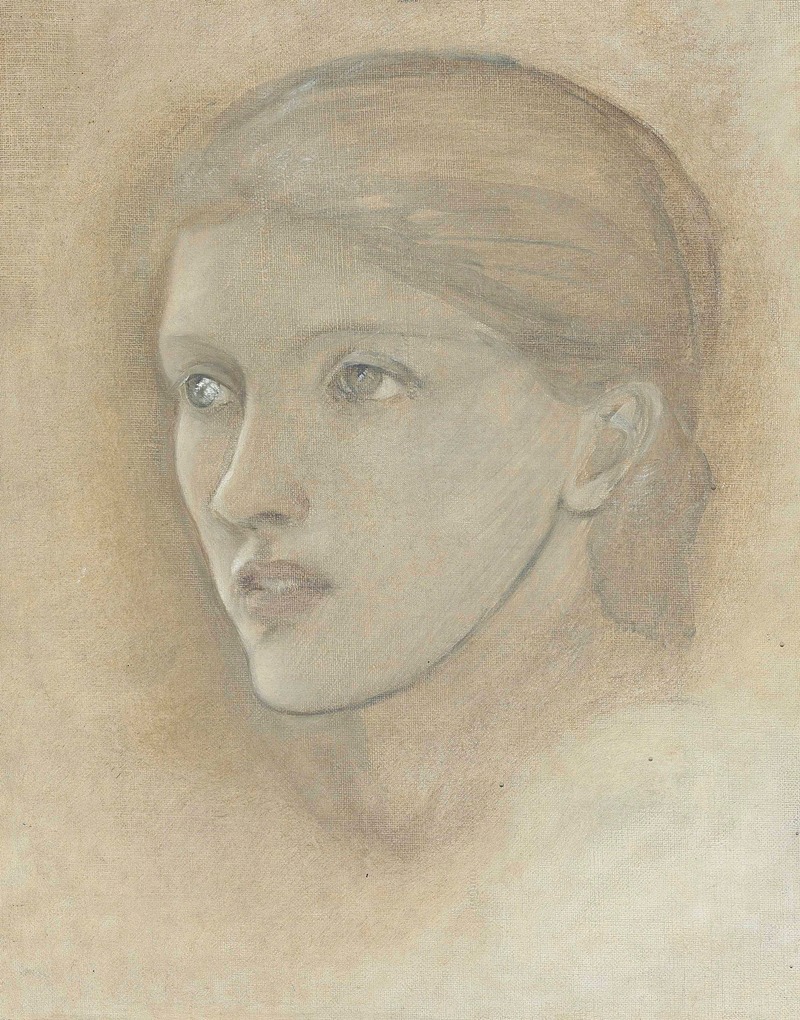
Female head study, looking to the right, for ‘The Golden Stairs’
A hand-painted replica of Sir Edward Coley Burne-Jones’s masterpiece Female head study, looking to the right, for ‘The Golden Stairs’, meticulously crafted by professional artists to capture the true essence of the original. Each piece is created with museum-quality canvas and rare mineral pigments, carefully painted by experienced artists with delicate brushstrokes and rich, layered colors to perfectly recreate the texture of the original artwork. Unlike machine-printed reproductions, this hand-painted version brings the painting to life, infused with the artist’s emotions and skill in every stroke. Whether for personal collection or home decoration, it instantly elevates the artistic atmosphere of any space.
"Female Head Study, Looking to the Right, for ‘The Golden Stairs’" is a preparatory drawing by the British artist Sir Edward Coley Burne-Jones, a prominent figure in the Pre-Raphaelite Brotherhood and the Aesthetic Movement. This study was created as part of the preparatory work for one of Burne-Jones's most celebrated paintings, "The Golden Stairs," which was completed in 1880 and is housed in the Tate Britain in London.
Burne-Jones was known for his meticulous approach to composition and detail, often creating numerous studies and sketches before finalizing his larger works. "The Golden Stairs" is a testament to his dedication to preparatory work, as it features a procession of eighteen young women descending a spiral staircase, each with distinct features and expressions. The painting is celebrated for its ethereal beauty and harmonious composition, characteristic of Burne-Jones's style.
The "Female Head Study, Looking to the Right" is one of the many studies Burne-Jones executed to capture the delicate features and serene expressions of the women depicted in "The Golden Stairs." This particular study focuses on the head of one of the figures, showcasing Burne-Jones's skill in rendering the human form with sensitivity and grace. The drawing highlights the artist's attention to detail, particularly in the depiction of the subject's facial features and hair, which are rendered with soft, flowing lines.
Burne-Jones's work is often associated with themes of beauty, mythology, and medievalism, drawing inspiration from a wide range of sources, including classical mythology, Arthurian legends, and medieval romance. His art reflects a longing for an idealized past, often characterized by a dreamlike quality and a focus on aesthetic beauty. "The Golden Stairs" and its preparatory studies, including the "Female Head Study," exemplify these themes, presenting an otherworldly vision that transcends the mundane.
The Pre-Raphaelite Brotherhood, of which Burne-Jones was a later member, was founded in 1848 by artists who sought to reject the academic standards of their time, advocating for a return to the detail, color, and complexity of Quattrocento Italian art. Although Burne-Jones joined the movement after its initial formation, his work embodies its principles, emphasizing meticulous craftsmanship and a deep appreciation for beauty.
Burne-Jones's influence extended beyond the Pre-Raphaelite circle, impacting the broader Aesthetic Movement, which prioritized art for art's sake and the pursuit of beauty over moral or narrative content. His works, including "The Golden Stairs," contributed to the development of Symbolism and Art Nouveau, influencing artists and designers across Europe.
Today, Burne-Jones is remembered as one of the leading figures of 19th-century British art, and his studies, such as the "Female Head Study, Looking to the Right," continue to be appreciated for their technical skill and artistic vision. These preparatory works offer insight into his creative process and the meticulous planning that underpinned his larger compositions, allowing viewers to appreciate the depth and complexity of his artistic endeavors.





